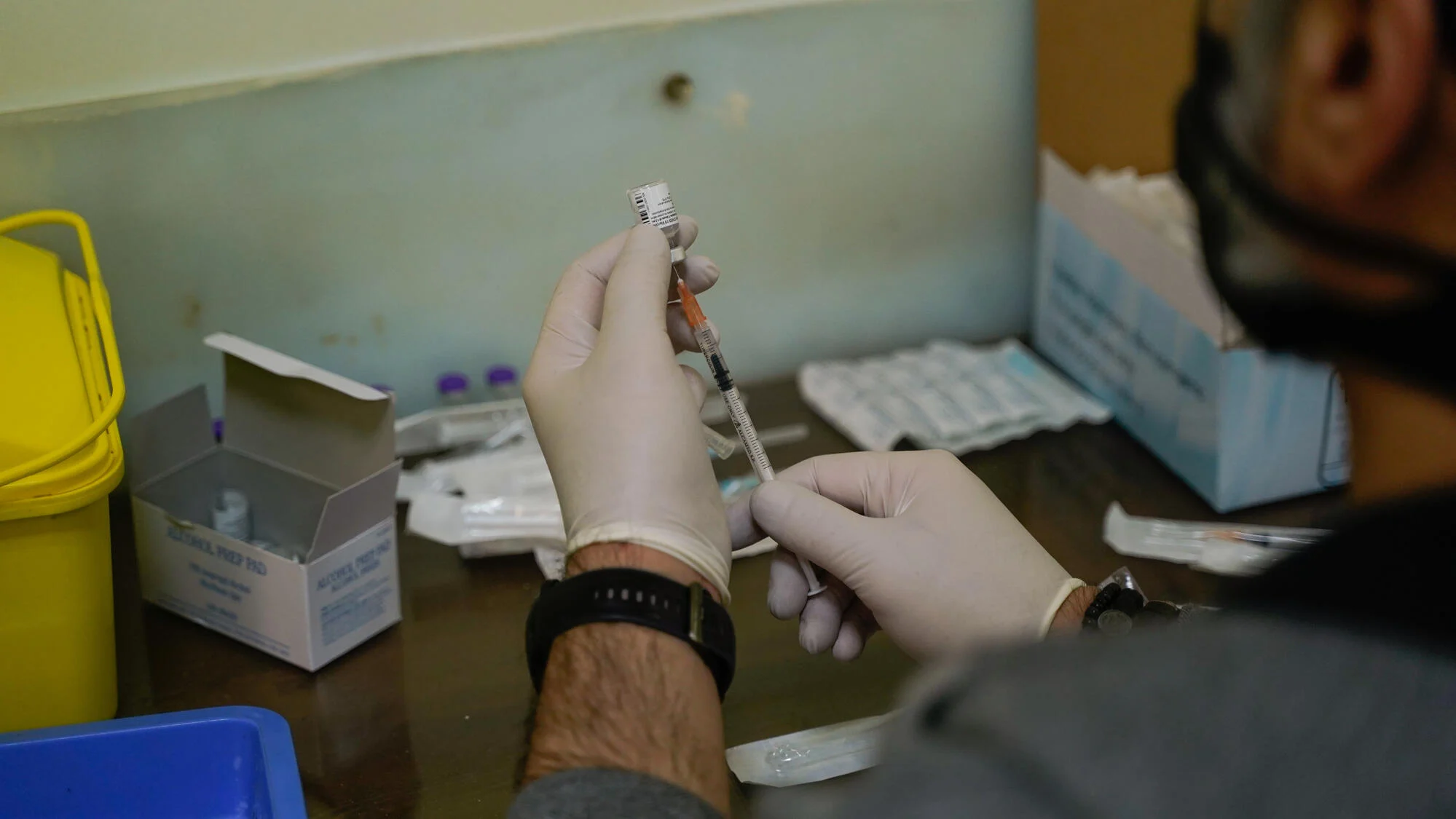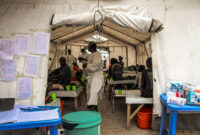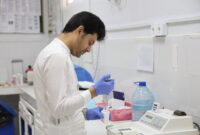Canada’s positions on the international pandemic treaty are concerning
by Adam R. Houston. Originally published on Policy Options on May 12, 2023
Despite some recent commentary on the federal government’s approach to consulting stakeholders on the proposed pandemic treaty currently being negotiated under the World Health Organization (WHO), little attention has been paid to the positions Canada itself has actually adopted or their potential repercussions. The problem has been fueled by a lack of government transparency.
This lack of attention needs to be rectified because the positions the government has adopted in negotiating the treaty (a.k.a. the pandemic accord or the pandemic instrument) would directly undermine equitable access to medical countermeasures such as drugs and vaccines. That would weaken the proposed treaty as a tool to respond to, and prepare for, future pandemics.
The worldwide response to the COVID-19 pandemic – particularly global access to vaccines – starkly illustrated the consequences of inequity. It is therefore promising to see equity play a major role in the zero draft of the treaty published by the WHO earlier this year. The preamble recognizes that “equity should be a principle, an indicator and an outcome of pandemic prevention, preparedness and response.”
We at Doctors Without Borders (MSF) have analyzed zero draft provisions implicating equity and highlighted how they could be improved. Canada, it appears, has taken the opposite approach.
Even for those, such as the author, who attended the government’s stakeholder session, the extreme nature of some of Canada’s proposed amendments is surprising, particularly given they do not seem to reflect the perspectives put forward by most of the stakeholders in attendance. This is very noticeable around issues regarding intellectual property, especially technology transfer.
If a patent is like a recipe, tech transfer is like showing other chefs how to prepare the dish properly. Based on its proposed amendments, Canada seems more insistent than any other country – except possibly the U.S. – that any tech transfer under the pandemic treaty take place on voluntary and/or mutually agreed terms. In other words, even in a pandemic, the maker of a life-saving vaccine or drug would have no obligation to help others cook from its recipe, regardless of how many people lack access. Canada’s stance would continue to protect the ability of pharmaceutical companies to control the underlying technologies, and ultimately the global supply, of medicines and vaccines needed in future pandemics. This could mean competitors’ factories that could otherwise be used to manufacture them would sit idle amidst global shortages, leading to avoidable deaths – all in the name of protecting a business model.
In a leaked draft of proposed amendments, Canada is not subtle about asserting voluntary and mutually agreed terms as a baseline throughout the treaty. It has proposed amendments inserting such language not only in the articles of the treaty dealing with issues such as access to medical technologies and intellectual property, but directly into Article 4(4), which sets out equity as a guiding principle of the treaty. Permitting pharmaceutical companies to withhold technology transfer at their whim is a strange conception of equity.
Canada is pushing this idea even though the COVID-19 pandemic is only the most recent illustration that a toolbox limited to voluntary, mutually agreed terms will be insufficient for the job. While examples certainly do exist of technology transfer occurring on voluntary, mutually agreed terms, the blunt fact is that far too frequently such terms simply are never reached, often because companies have little interest in reaching them. MSF has witnessed the negative consequences for access all too regularly for diseases such as HIV. Indeed, even the successful examples are often limited in scope, applying, for instance, only to certain countries (during COVID-19, middle-income countries were often excluded).
Tech transfer does not solve equitable access issues with a snap of the fingers; it can be challenging and time-consuming. But attempts to establish voluntary, mutually agreed terms as the legal baseline in the treaty fail to address the much-greater problem of such terms frequently not being reached at all. Such requirements would embed mistakes of the past into the very instrument meant to address them.
Despite these implications, there is precious little public information circulating regarding Canada’s positions, let alone their justification. Sifting through hours of video does yield a statement from Canada’s representative at earlier negotiations in December, pushing back on proposed measures to increase access because it “will be important to avoid creating disincentives for government/industry collaboration.” However, further elaboration, if any, has been behind closed doors.
Meanwhile, the government’s proposed treaty amendments stand in stark contrast to its more publicized stance on Canadian support for tech transfer in furtherance of vaccine equity. There is particular irony in Canada’s recent announcement of additional financial support to the WHO mRNA vaccine technology transfer hub. The hub is intended to transfer technology to build capacity in low- and middle-income countries. However, to acquire technology to transfer, the hub itself was forced to reverse-engineer mRNA vaccines – vaccines built in part on Canadian-developed lipid nanoparticle technology – because voluntary tech transfer to the hub did not occur in the first place!
A Canadian stance prioritizing private profits over public health becomes even more counterproductive when the tech being transferred arises from publicly funded research and development, including the massive sums spent by the Canadian government on technologies such as monoclonal antibodies and vaccines through multiple funding streams. Unfortunately, the government’s proposed amendments to the pandemic treaty echo the approach evident in its response to the recent report on vaccine equity by the Commons standing committee on foreign affairs.
The committee recommended “the Government of Canada ensure that its agreements to provide research and development funding include clauses that allow intellectual property resulting from that funding – including vaccines, therapeutics, and diagnostics – to be easily licensed to manufacturers serving low- and middle-income countries.”
While acknowledging the underlying principle – long advocated by the MSF – that public investment should be for public benefit, the government responded unfavourably to this recommendation, stating “public benefit is maximized when IP terms and conditions are tailored to address the specific context and objective of each funding opportunity on voluntary, mutually agreed terms.” It seems rather bizarre to suggest that public benefits are maximized when the life-saving innovations underpinned by publicly funded intellectual property do not reach all those who need them. This is evident not merely in the human cost – in illness and lives lost – but in the tremendous economic impact of an unchecked pandemic that drastically outweighs the dividends paid to shareholders of a few companies.
To maximize public benefit, publicly funded research and development must come with strings attached to ensure public access, particularly in circumstances such as a pandemic. This does not mean that obligatory, rather than voluntary, measures need to be the first or only step, but it does mean there need to be safeguards in place for when voluntary, mutually agreed terms are not reached.
This same principle of ensuring safeguards for access should guide the pandemic treaty as well. A preference for voluntary and mutually agreed-upon terms for tech transfer is one thing. Enshrining an approach that has repeatedly failed as the legal standard, without any safeguards when such terms are not reached, is quite another. If the government believes that this approach is appropriate and effective, even in the face of voluminous evidence of the repeated failures of voluntary-only measures to ensure global access to vital medicines, it should at the very least be upfront about making its case.
This article first appeared on Policy Options and is republished here under a Creative Commons license.

































